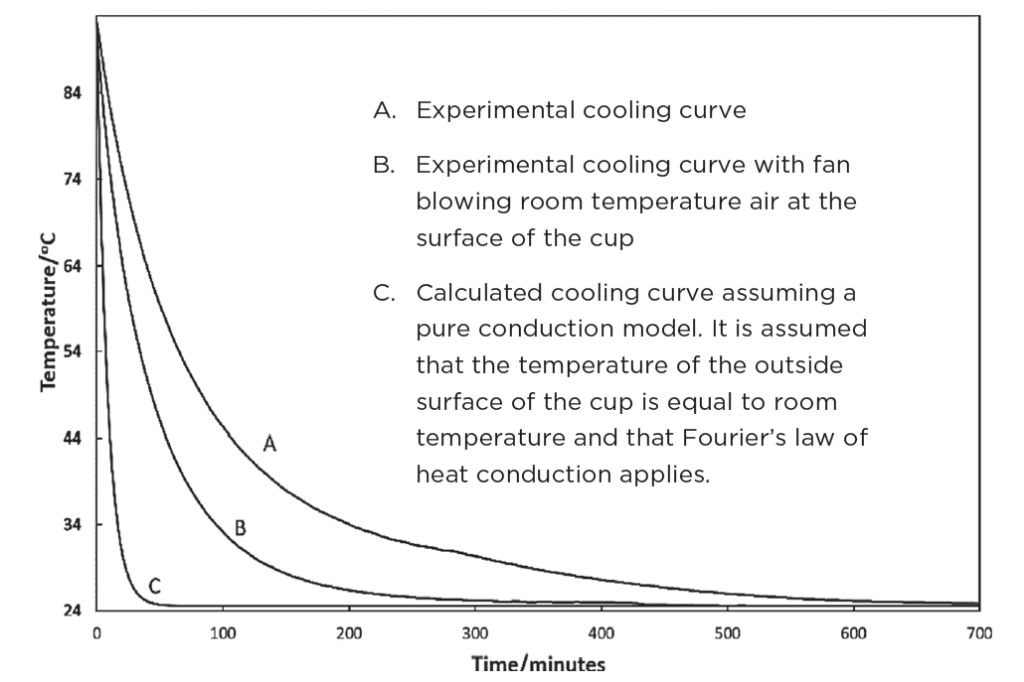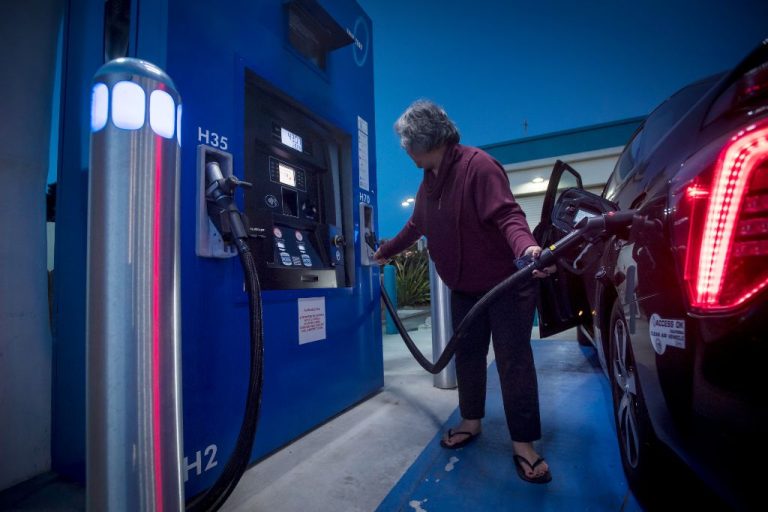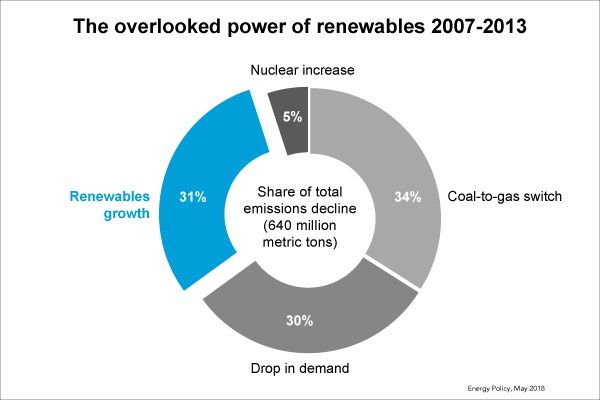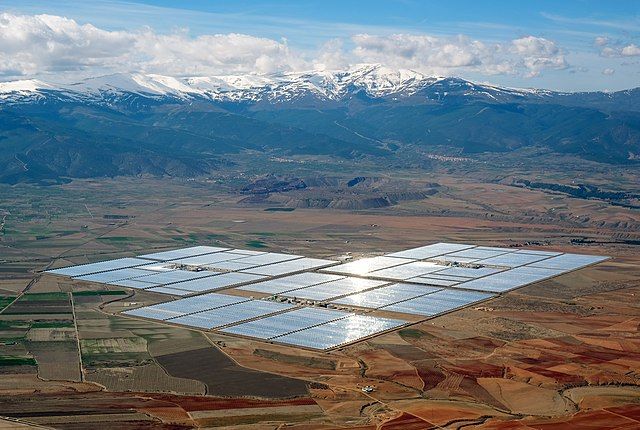What Is The 2Nd Law Of Thermodynamics In Simple Terms?
What is the 2nd Law of Thermodynamics?
The 2nd law of thermodynamics states that the total entropy (disorder) of an isolated system always increases over time. In simpler terms, the law says that energy tends to spread out and become more disorganized as time goes on.
This law is all about the direction that energy flows and how it becomes more spread out and disordered. Imagine dropping some food coloring into water – over time, the color will dissipate and spread out throughout the glass. The 2nd law says that this is the natural direction for energy to flow.
Another way to think of it is that concentrated energy tends to spread out and become more disorganized naturally. An ice cube in a warm room will melt and diffuse into the air – however, the air will not spontaneously come together into an ice cube. The ice melting into a disordered state is the natural direction, according to the 2nd law.
So in summary, the 2nd law of thermodynamics states that over time, the entropy (disorder/randomness) of an isolated system will tend to increase as energy becomes more spread out and disordered.
Entropy
Entropy is a measure of the amount of disorder or randomness in a system. The concept comes from thermodynamics, which deals with energy and heat transfer between different systems. In simple terms, entropy is a measure of how spread out the energy or heat is in a system.
As an example, a hot cup of coffee that has been sitting for an hour has lower entropy than a cup that was just stirred and had cream added. The untouched coffee has the heat energy more concentrated, while stirring spreads the heat out more evenly. Adding cream increases randomness as the coffee and cream molecules mix together. So the stirred cup with cream has higher entropy – the energy is more spread out and disordered.
Entropy naturally increases as energy spreads out and becomes more disordered over time. An ice cube melting is another example – the structured ice crystals turn into disordered water molecules spreading out. Increasing entropy is essentially energy dispersing and not being able to do useful work.
Irreversibility
The 2nd law of thermodynamics shows that many processes are irreversible. This means that they can only go in one direction, and not in reverse. For example, when you mix hot and cold water together, heat flows from the hot water to the cold water until they reach the same uniform temperature. However, the heat will not spontaneously flow back from the uniform temperature water to re-form the hot and cold regions. The process of heat flowing and mixing to uniform temperature is irreversible.
Another example is perfume diffusing in a room. The perfume molecules spread out evenly in the air over time. However, the perfume molecules will not spontaneously come back together in one corner of the room again. Like heat diffusing, the spreading out of perfume is irreversible.
In nature, many diffusive processes like heat spreading out are irreversible. The 2nd law shows there is a natural tendency for systems to go towards higher disorder and randomness over time. Once changed, they cannot easily go back to their prior state without external effort.
Increase in Entropy

The second law of thermodynamics states that entropy, which is a measure of disorder, always increases over time in an isolated system. This means that concentrated forms of energy, like heat, will naturally spread out and become more disordered over time if left alone.
We can see examples of entropy increase in everyday life:
- Hot coffee left on a table will transfer heat to the room and cool down over time as the concentrated heat energy spreads out.
- Ironing clothes involves using energy to reverse the natural increase in entropy as the fabric fibers become more disordered.
- Food goes bad as molecules break down and decay, increasing disorder at the microscopic level.
- Without energy inputs, rooms become messier and more disorganized as entropy increases.
In all of these examples, concentrated energy tends to naturally spread out over time. The second law of thermodynamics describes this observed phenomenon and shows that the entropy or disorder of isolated systems always increases.
Entropy and Disordering
The second law of thermodynamics states that the entropy of an isolated system always increases over time. Entropy is a measure of disorder, so an increase in entropy also means an increase in disorder. This is because as energy spreads out uniformly, it becomes less ordered and more chaotic.
A simple example is a hot cup of coffee left untouched on a table. Initially the coffee molecules are very ordered, with the hotter molecules concentrated near the bottom and the cooler ones near the top, leading to a smooth temperature gradient. However, as the coffee cools down and equilibrates with the room temperature, the molecules spread out and mix randomly, creating disorder. The entropy increases as the coffee goes from an ordered state to a disordered state.
Another example is a smoke puff released in a room. Initially the smoke is concentrated in a small region forming a nice puff. But over time, as the smoke molecules spread out randomly in the room, the puff disappears and we are left with a disordered distribution of smoke. The entropy has increased from the initial ordered state to the final disordered state.
In general, concentrated and structured systems like crystals, have low entropy. But as energy spreads out, they naturally tend towards high entropy or disordered states like gases. The second law says this increase in entropy is irreversible for isolated systems.
Energy Spreading Out
With increased entropy, energy tends to spread out and become less concentrated in a system. For example, when you pour cream into coffee, the cream begins to disperse and spread throughout the coffee cup. The concentrated cream becomes less concentrated as it mixes with the coffee. From order to disorder, energy diffuses from areas of higher concentration to areas of lower concentration.
This tendency for energy to spread out uniformly is seen throughout nature. As an ice cube melts, the more concentrated solid ice absorbs heat energy from the warmer surrounding air or liquid, spreading the energy out until the entire system reaches a uniform temperature. Hot air inside your home naturally transfers heat to the colder outdoor environment in an attempt to balance temperatures. Without an external energy source, useful energy within a system will eventually diffuse and become unavailable for work.
Heat Transfer
The 2nd law of thermodynamics has significant implications for heat transfer between objects. According to the law, heat will naturally flow from hotter objects to colder objects, but not vice versa. This is because hotter objects contain more thermal energy, and this energy will spontaneously spread out and equalize if allowed to interact with colder objects that have less thermal energy.
For example, when you pour hot water into a cold glass, the heat flows from the hot water into the colder glass and its surroundings, cooling down the water and heating up the glass. However, the heat will not transfer back from the glass to the water unless external energy is added to the system. This one-way flow of heat is a manifestation of the 2nd law and the tendency of thermal energy to spread out rather than concentrate.
It is impossible for heat to spontaneously flow from a colder object to a hotter object without added work. This would require heat to concentrate rather than spread out, violating the 2nd law. For example, an ice cube cannot melt itself by absorbing heat from room-temperature air. The thermal gradient drives heat in the opposite direction. Any machine designed to violate this principle is called a “perpetual motion machine” and is impossible according to the 2nd law of thermodynamics.
Perpetual Motion Machines
One important consequence of the 2nd law of thermodynamics is that it prohibits perpetual motion machines. A perpetual motion machine is a hypothetical device that, once activated, would continue to operate indefinitely without any external energy input. The 2nd law shows why such machines are impossible.
The reason perpetual motion machines can never work is because they would violate the 2nd law, which requires that entropy in an isolated system must increase over time. A perpetual motion machine would need to continuously convert heat into work without any heat transfer to a lower temperature. But the 2nd law says this is impossible, as some heat will always be lost in any real process.
There have been many failed attempts to create perpetual motion machines over the centuries. Some examples include:
- Water wheels designed to pump water back to the top once it flows down.
- Magnets arranged to repel and attract each other forever in a wheel.
- Weights attached to levers thought to move continuously.
While ingenious in conception, all these attempts have failed because they cannot escape the inevitable increase in entropy dictated by the 2nd law. The 2nd law proves that perpetual motion is impossible and no machine can operate indefinitely without an external energy source.
Real World Applications
The second law of thermodynamics has many real world applications and implications. Here are some examples:
Evolution: The tendency for entropy to increase explains why complex life forms evolve from simpler ones. More complex organisms have more ways to increase entropy, so evolution favors them.
Aging: As organisms age, their cells accumulate damage over time, which increases entropy. Younger organisms are more ordered with lower entropy.
Engines: No real engine can be perfectly efficient. There are always energy losses to heat, friction, and other factors, limiting the amount of useful work that can be extracted. This is due to the second law.
Heat Pumps & Refrigerators: These work by moving heat from a cold reservoir to a hot reservoir. They need external energy to overcome the second law’s tendency for heat to spread out evenly.
Stars: The nuclear fusion in stars is driven by the second law, as gravitational forces produce so much heat and pressure that fusion becomes inevitable.
Black Holes: These represent maximum entropy compression, where matter is crushed into an extremely dense state at the end of a star’s life.
The second law ultimately governs all physical and chemical processes. It explains why reactions don’t spontaneously reverse themselves, why perpetual motion is impossible, and why the universe has an arrow of time.
Summary
The Second Law of Thermodynamics states that the entropy (disorder) of an isolated system always increases over time. In simpler terms, this means that over time, the energy within a closed system will spread out and become more disordered. Useful energy, like the energy that powers machines, will dissipate into useless heat energy that can’t be harnessed to do work.
This law explains why perpetual motion machines are impossible – there are always some inefficiencies that generate waste heat and friction, preventing 100% conversion of heat into work. It also explains why we can’t get useful energy for free – some energy is always lost as waste heat. No real process is perfectly efficient.
The Second Law also helps explain many everyday phenomena. Why does milk disperse in coffee? Why do buildings deteriorate over time if not maintained? Why do we need to keep eating – isn’t the food we ate yesterday still in our bodies? The answer is that according to the Second Law, systems naturally progress toward more disordered states. Useful energy dissipates over time. Structures break down. Without new inputs of energy, systems move toward higher entropy.
Understanding the tendency for entropy to increase gives us power – it helps us design engines and machines that are as efficient as possible. We can’t break the Second Law, but we can design systems that make the best use of available energy.




